San Francisco
Day 1
Climb aboard the Powell-Mason cable car for an exciting ride. Get off at North Beach and visit Coit Tower (p56) to see innovative murals and breathtaking 360-degree views. Ascend the scenic Filbert Street Steps (p57) to the sunny Embarcadero waterfront, then dive into total darkness at the Tactile Dome in the Exploratorium (p53). Enjoy sensational fish tacos at Mijita (p79) in the Ferry Building (p78), then take the pre-booked ferry to Alcatraz (p51), the infamous maximum-security prison where inmates lived in tiny solitary cells. After touring the former prison, head to North Beach, where you can browse books at City Lights (p71), the symbolic bookstore of free speech, and see the Beat Museum’s (p60) collection of memorabilia.
Day 2
Take the California St cable car to Grant St to experience Chinatown.
The 41 historic alleys that border the 22 blocks of Chinatown have seen it all since 1849: gold rushes and revolutions, incense and opium, fires and hostilities. Chinese miners were among the first to arrive in San Francisco for the gold rush, but after 1870, anti-Asian laws restricted migration and made it harder to find work and housing. People of Chinese descent were denied the right to own property and participate in labor unions; many had to resort to dangerous jobs, such as building railway tunnels blasted with explosives in the mountains. White owners of Chinatown buildings made huge profits from the opium dens in Duncombe Alley and the brothels in Ross Alley. When the 1906 earthquake and fire devastated Chinatown, construction entrepreneurs persuaded the city to evacuate Chinese residents. However, with the support of the Chinese consulate and local merchants, and armed with pistols, Chinatown residents resisted the expulsion order and even returned to rebuild their community. Family associations closed opium dens and brothels, and in the 1920s, merchants renovated the neighborhood to attract tourists. Today, mahjong is still played at 36 Spofford Alley, where Sun Yat-sen once planned the revolution.
Cross the ‘Dragon Gate,’ donated by Taiwan in 1970, and you’ll find yourself in Dupont, a street once notorious for its red-light district.
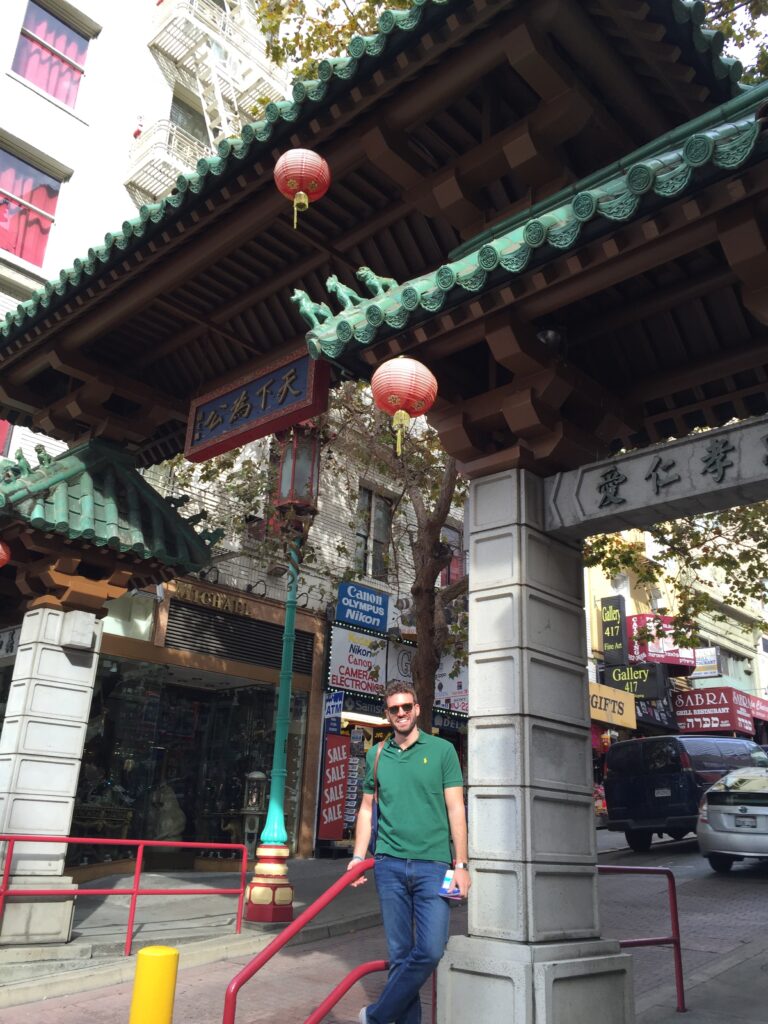
The ‘Chinese-deco’ architecture beyond the gate, featuring pagoda-roofed buildings, is the result of a group of enlightened entrepreneurs led by Look Tin Ely, who transformed the street from a prostitution area into a shopping district in the 1920s. Today, dragon-shaped lanterns illuminate souvenir shops and tea houses in the area.
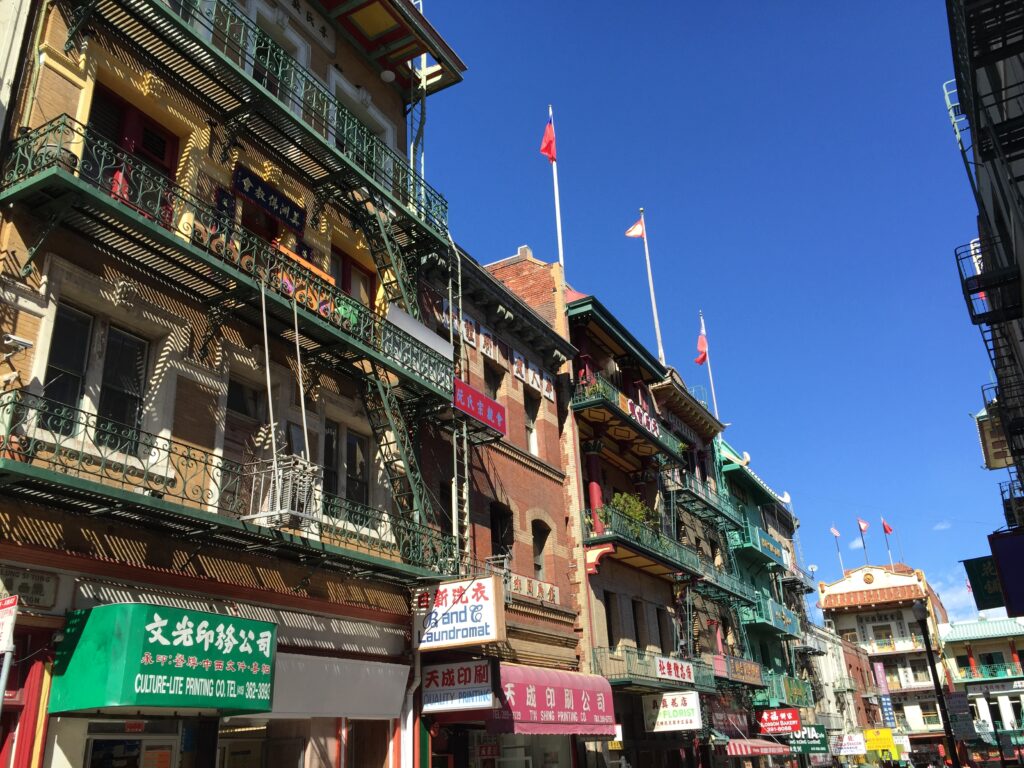
Stop for tea tastings at Red Blossom and the collection at the Chinese Historical Society of America. Stroll through Waverly Place with its temples, and Ross Alley, where you can buy fortune cookies from Golden Gate Fortune Cookie Company.
This bakery bakes custom cookies (50¢ each) using antique pastry presses. Alternatively, you can purchase a pack of risqué fortune cookies. They only accept cash, and a 50¢ tip is required for taking photographs.
Choose your favorite Chinese dumplings at City View, then climb the hill, pass by the ‘parlor houses’ (i.e., brothels) from the gold rush era.
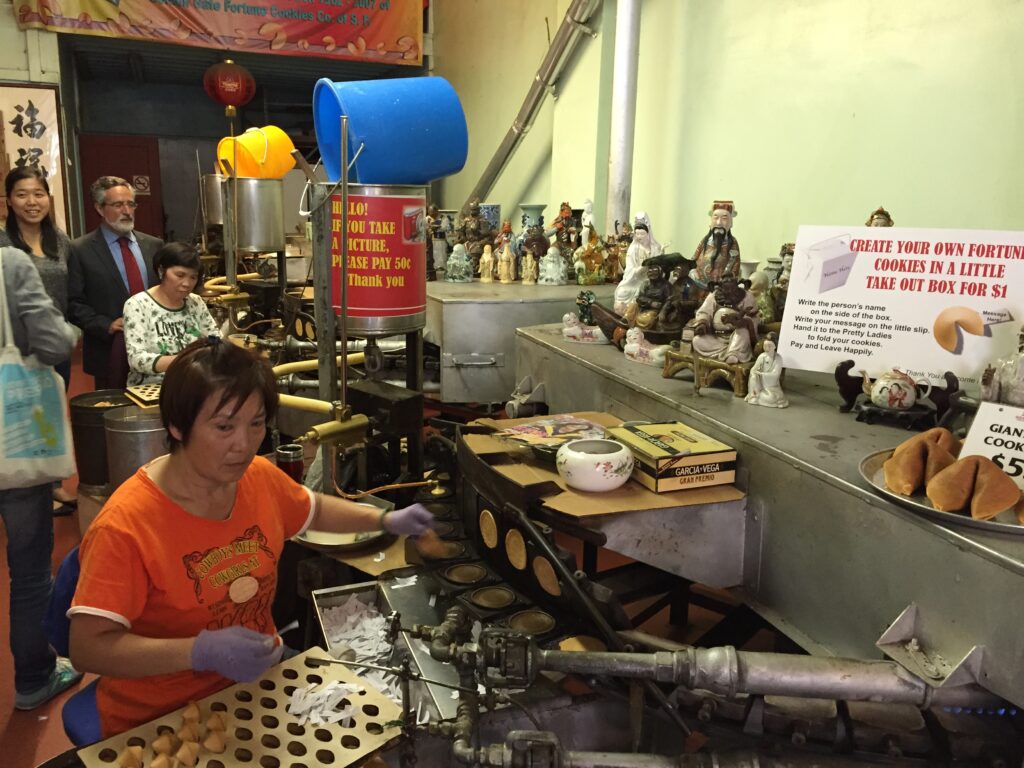
Forget about car chase scenes from movies (such as “Vertigo,” “What’s Up, Doc?”) and commercials shot in San Francisco: the best way to reach Lombard Street isn’t by car but by cable car. The Powell-Hyde line reaches Nob Hill and then climbs Russian Hill, passing millionaires’ mansions and secret staircases lined with gardens. Get off at Lombard for an unbeatable view from the hill. From the highest point of Lombard Street, you might get dizzy: this zigzagging paved road descending Russian Hill has eight sharp turns and a steep slope of 27%. It might not be the ‘crookedest street in the world’ as commonly claimed (that title goes to Vermont Street on Potrero Hill), but you get the idea. The street appears in Hitchcock’s movie “Vertigo,” and skateboarding legend Tony Hawk included these twists and turns in his Pro Skater video game. If you’re not up for driving, you can walk down the 250 steps; it’s equally scenic.
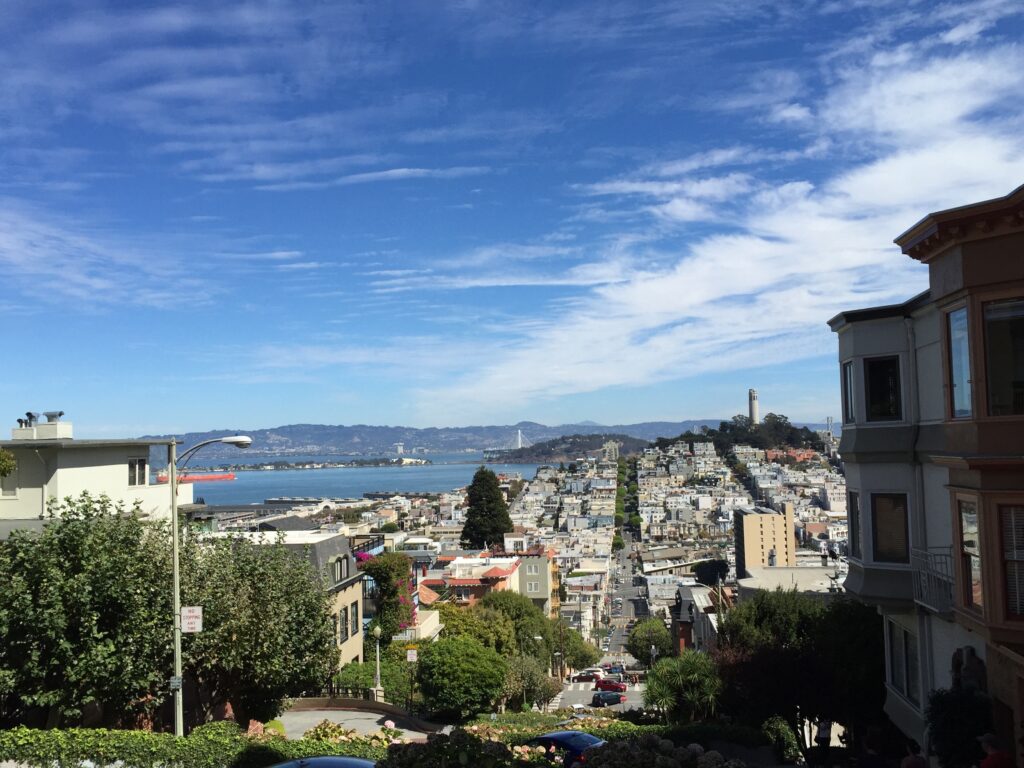
Back in the roaring ’20s, too many drunk people ended up with their cars in the gardens of Russian Hill houses. So, the homeowners decided to add eight sharp turns adorned with flowerbeds, transforming this extremely dangerous shortcut into a picturesque route. The result is what you see today: a red-bricked paved street, bordered by beautifully manicured flowerbeds and flanked by 250 steps.
Those brave enough to navigate Lombard Street’s perilous turns miss out on the view of the Golden Gate Bridge enjoyed from the winding paths of Sterling Park atop the hill. The sunset framed by wind-kissed Monterey pines is pure poetry and befits the park’s namesake, the penniless bohemian poet George Sterling, a nature lover, advocate of free love, and opium enthusiast. San Francisco’s high society was not scandalized by his eccentricities and dedicated this park to him.

From the winding Lombard Street you will arrive at the Fisherman’s Wharf. Once upon a time, fishermen cast their nets here, but today it’s the tourists who are hooked: this commercial park stretches from the cable car terminus to the pier where cruises to Alcatraz depart. When you least expect it, Fisherman’s Wharf will offer you pleasant surprises. Here, you can sunbathe next to the sea lions, ride the carousels’ unicorns, enter a World War II submarine, have your fortune told by a wooden fortune teller, and watch sharks swim while you’re safely enclosed in glass tubes in the middle of the bay.
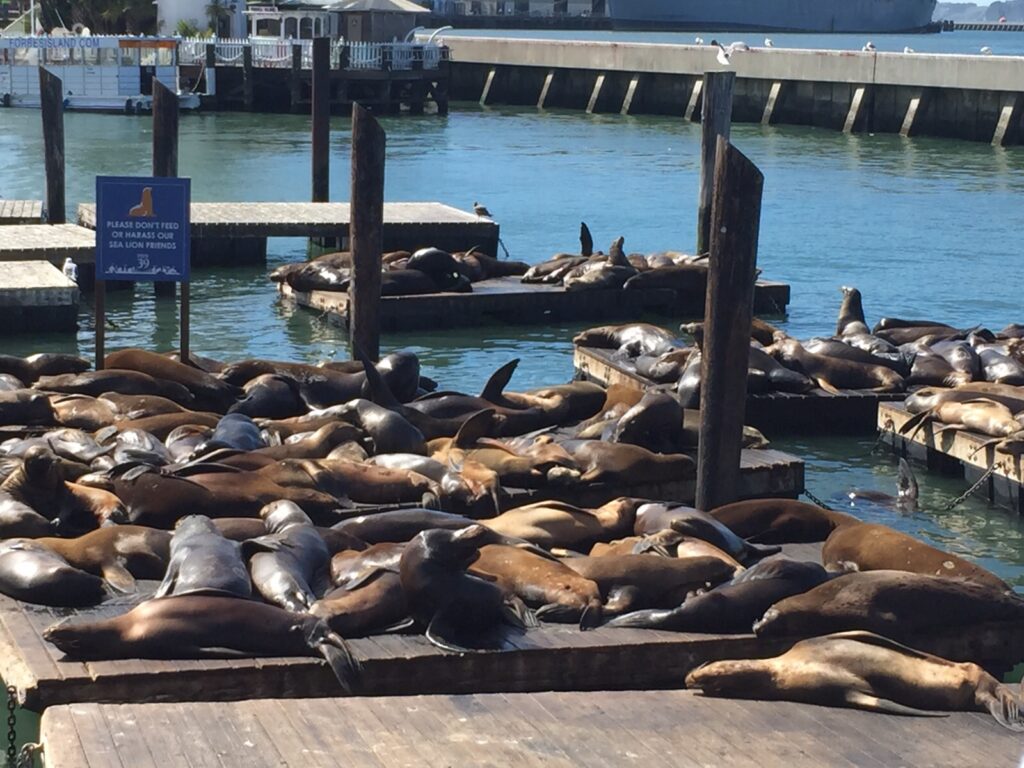
Even the stars dream of the sea lion life in San Francisco, which since 1990, has occupied a part of the tourist port where yachts dock. California law requires boats to give space to these mammals: therefore, from January to July, boat owners must give up their berths at Pier 39 to allow about 1300 sea lions to enjoy the sun undisturbed. They are the envy of all beach bums!
USS Pampanito All aboard! Enter this World War II military submarine that sank six Japanese ships, including two carrying British and Australian prisoners of war. The tales of tension while the submarine was submerged will leave you breathless (be careful if you suffer from claustrophobia), and all those brass knobs and hydraulic valves will make 21st-century technology seem overrated.
Day 3
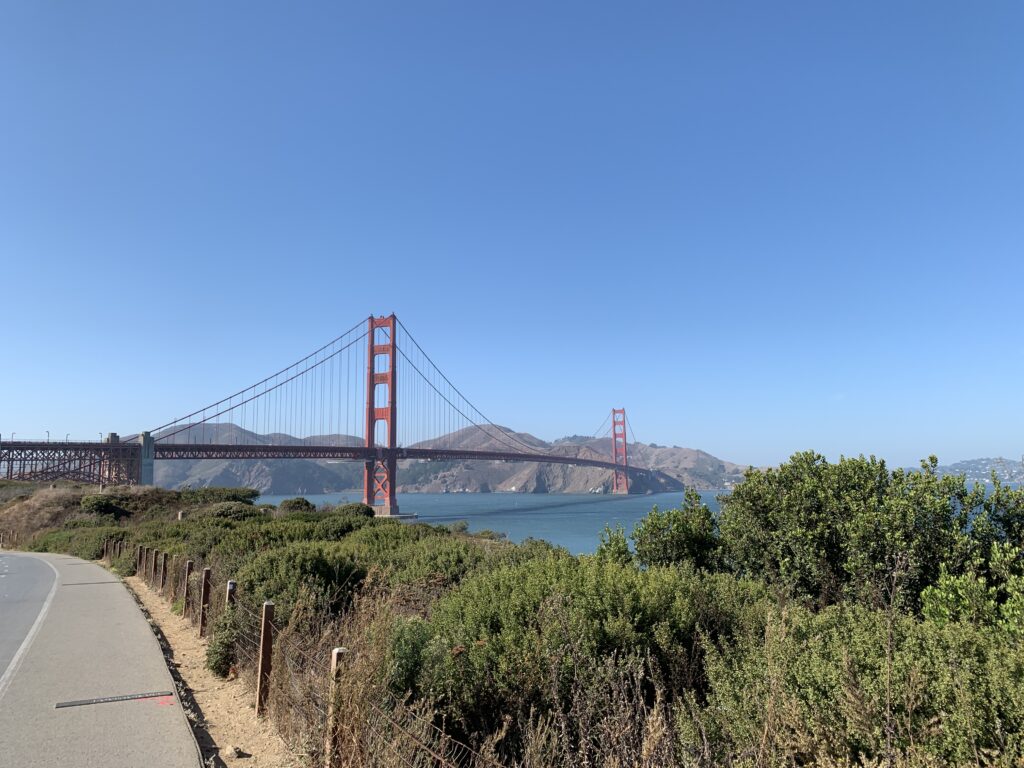
Strange but true: the San Francisco icon project came close to being rejected by the Navy in favor of a cement bridge with yellow-striped pillars. The mind behind this masterpiece in 1937 was engineer Joseph B. Strauss, but architects Gertrude and Irving Murrow deserve credit for the elegant Art Deco style and the distinctive color known as ‘international orange.’ Before the US Department of War could object, workers got to work, constructing the nearly 3 km-long span and 200 m-tall pillars in just four years.
San Francisco residents passionately defend their perspective on things, especially the city’s icon. Those who prefer foggy landscapes might say that Marin’s Vista Point, to the north, offers the most beautiful panoramic view, where clouds seem to perform acrobatics like Olympic gymnasts on the bridge cables. From Crissy Field, you can appreciate the entire span (and capture windsurfing and kitesurfing in your photos), while at Baker Beach, a beach frequented by nudists, you can admire the bridge in all its grandeur.
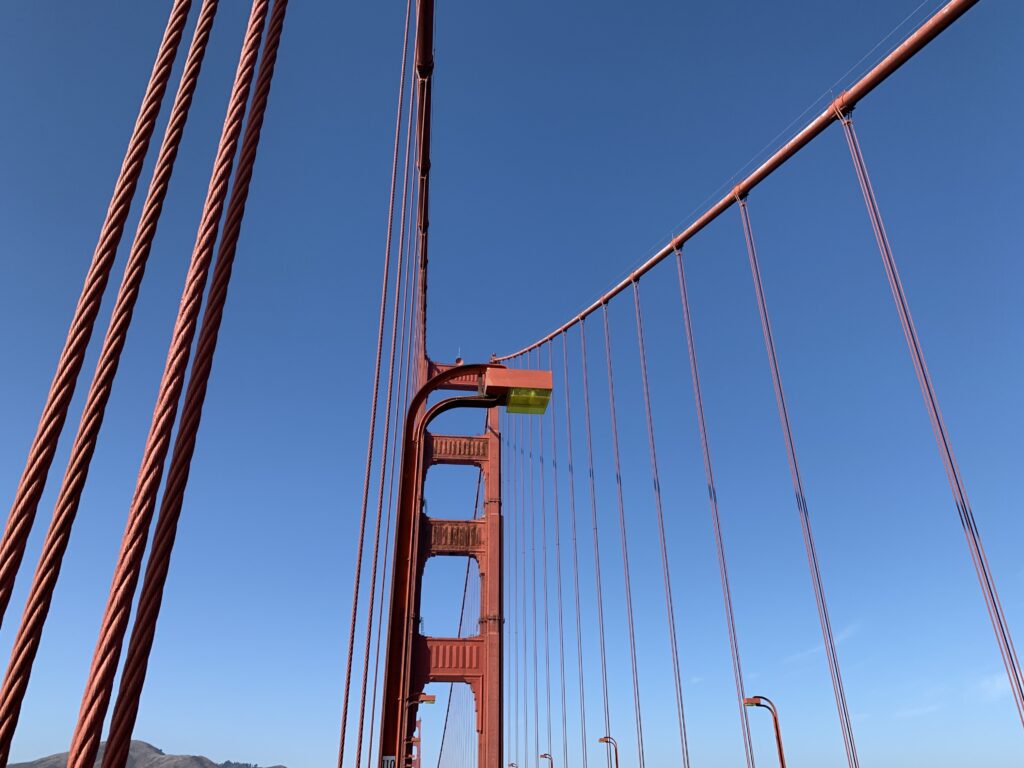
To see both sides of the Golden Gate, bike or walk along the span. A pedestrian path runs from the toll booth to the east sidewalk (pedestrian access 5 am-6:30 pm every day) starting from the parking lot and bus stop. Near the toll booth, there is a network of sturdy suspended cables, bearing the weight of thousands of buses and cars passing through here every day. If you don’t want to walk back, take a Golden Gate Transit bus departing from Marin. Bicycles have access to the bridge 24/7 from either the west or east sidewalk, but they must yield to pedestrians on the east sidewalk. When crossing the bridge, electric bikes must be used with the motor turned off.
Built in 1861 with 126 cannons, Fort Point was meant to deter Confederate soldiers during the Civil War but never saw military action; instead, it served as the backdrop for Hitchcock’s film “Vertigo.” Enjoy the view and read the panels about the Civil War.